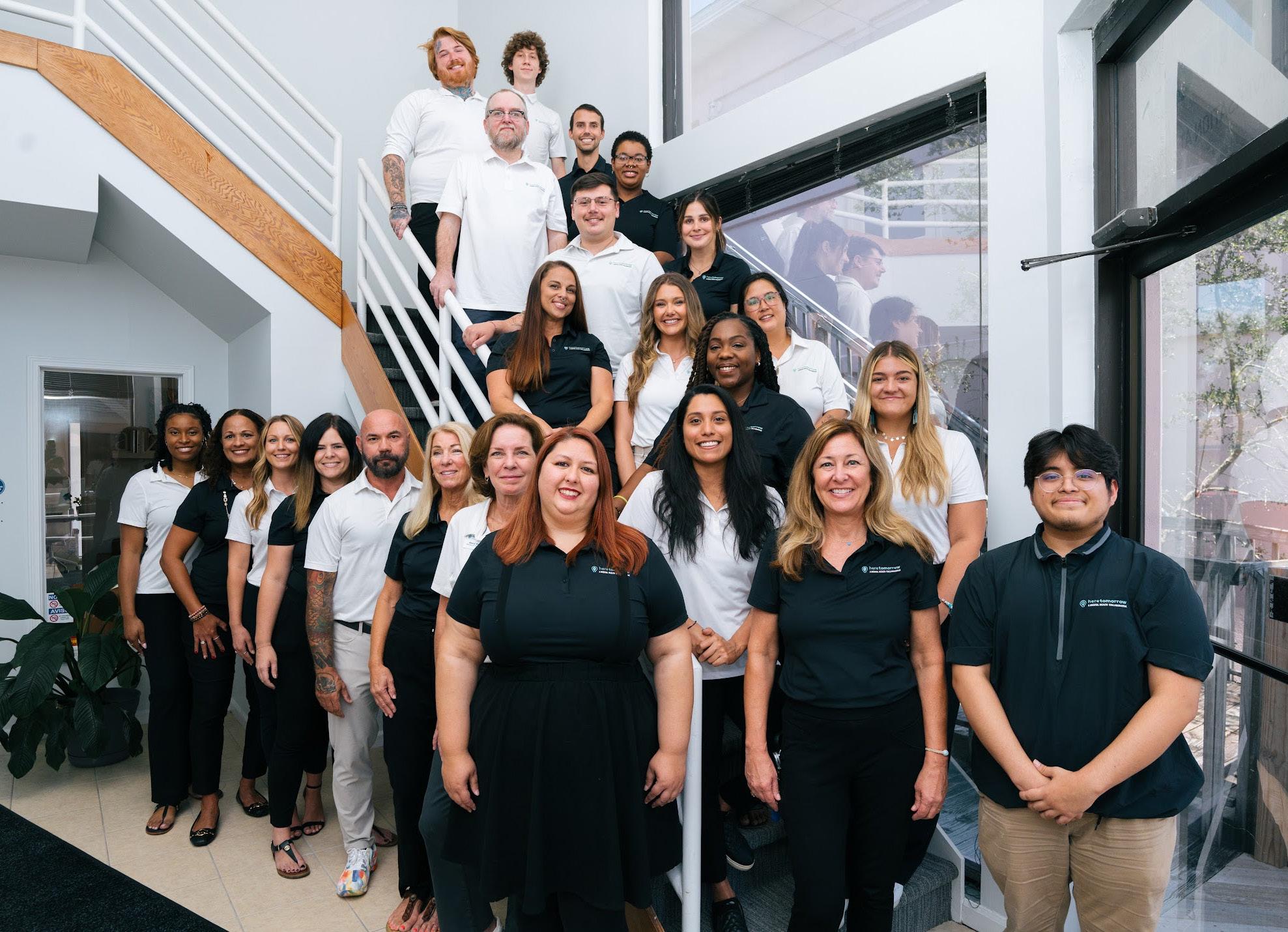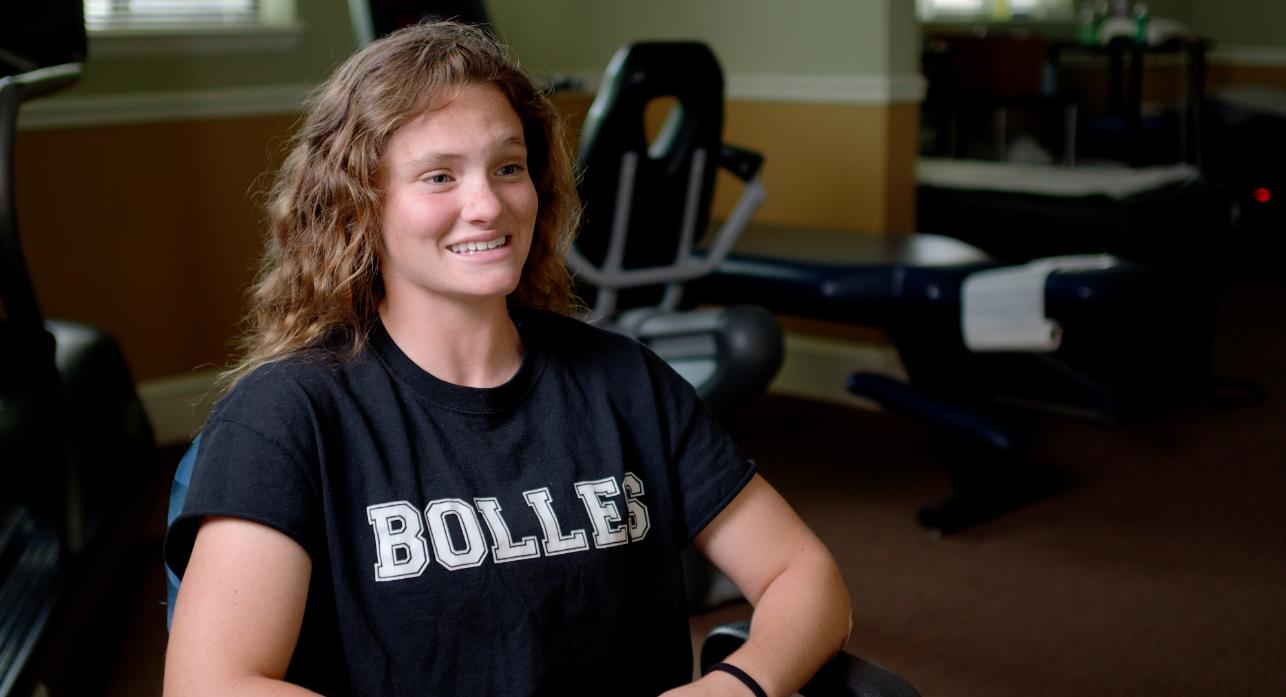












Ambar Ramirez, Sam Kaplan and model Chase Smith capturing the cover for the overall theme of development and lack of in Downtown Jacksonville and surrounding neighborhoods.




Mr. Ben Frazier was one of the greatest citizen advocates in the history of Jacksonville,Florida. Anybody that met and had a conversation with Mr. Frazier understood him to be a positive and spiritual human being. Ben grew up on his beloved Northside during Jim Crow and segregated schools. When he was a young child he and his mother witnessed a KKK rally that had a lasting impact on his life. After attending Jones College he became a newscaster in Jacksonville, Detroit and Washington DC. Ben was an avid student of history and the civil rights movement of the 1960s especially the thoughts and ideologies of Dr.King and John Lewis. Mr Frazier was invited to speak to classes at UNF and the United Nations in Geneva Switzerland.
About 9 years ago Ben founded the Northside Coalition a nonprofi t and brought all this experience and knowledge to the activist community. A new voice had found his calling and we are all the better because of his passion. One of his favorite messages to the city council was,” let’s make this city to busy for hate”. Another of the Frazier sayings was, “it’s not about marble and stone it’s about respect and education.”
Leading the way on educating our citizens we turned a 70% keep the monuments to a 70% take em down. Marches were organized in Tallahassee and Brunswick, Jaguars marched and protested and Lenny Curry removed a confederate monument and promised to remove the others so he could join the march. Northside Coalition and others organized the 42 mile march to St. Augustine and the confederate monuments were removed from there. The Northside Coalition along with other groups led the way in removing confederate names off our schools.
Collaboration with both the Jewish community,LGBTQ community and other people and organizations that needed assistance or a voice to advocate for them all called Ben Frazier. Ben continually met with JSO to try to improve community relations and their antiquated policies.Christina Kittles and Ben Frazier debated the Mayor and Sheriff on local TV for all citizens to watch. As many people found out Ben could not be bought and had the courage to speak out. Northside Coalition was and still is the go to organization for the local and national press when needing comment on issues. Was Ben Frazier controversial? Of course he was. Was Dr.King controversial? Was John Lewis? Good Trouble but always nonviolent.
To continue honoring hateful ideology should not be who we are. Mr.Frazier was an outstanding citizen of this city. We should rename confederate road to Ben Frazier Place because he was an honorable man and it’s the right thing to do.
Bob Rutter
Neptune Beach Northside Coalition


To Bishop Kenny High School for being named an Apple Distinguished School, a recognition of their commitment to innovation, leadership and excellence in education through the use of technology. This honor, awarded for the 2024-2027 term, highlights the school’s efforts in using Apple products to enhance learning, inspire students and achieve remarkable academic results.

To the Downtown Investment Authority (DIA) for consistently dropping the ball on nearly every project they’ve touched. The blame for the sorry state of Downtown falls squarely on them. The city looks and feels like a ghost town.

Words by Ambar Ramirez & Carmen Macri
September’s planetary movements ignite your fiery nature, Aries. With Mars aligning harmoniously with Mercury, your energy and communication are on point. Use this momentum to tackle new projects, but be mindful (so demure) of burnout — pace yourself for long-term success.
Get ready for a busy month, Taurus. Just when you think you can relax, the stars bring some astronomical (pun intended) events your way. With the full moon on Sept. 17 lighting up your 11th House of friendship and the Fall equinox shifting Venus into your romantic 7th House, just know that you will have your work cut out for you in all things relationships. But rest assured, when Mercury moves into your 6th House of health and wellness on Sept. 26, you’ll get the time to catch your breath.
The Sun in Virgo pushes you to focus on growth this month, Leo. As Venus goes direct in mid-September, relationships become clearer, helping you mend rifts and attract what you desire. Take bold steps forward but don’t forget, it takes two to tango … Just because you feel you found sight of what is right, don’t push someone out of the way to get it.
Happy September, Cancer. This season, it’s not just the leaves that are changing. As a deeply intuitive sign, you’ve always had a unique, artistic perspective, but you haven’t fully brought your visions to life—yet. On Sept. 17, a lunar eclipse will ignite your creativity, making it a powerful day for awakening your artistic side.
Mercury, your ruling planet, finally goes direct after retrograde, clearing up the confusion that’s been swirling around the past month, at least now you have an excuse for your actions. Expect new ideas and connections to blossom. Embrace your dual nature by balancing work and play, what could possibly go wrong with that?
Even though your season is coming to a close, Virgo, the fun doesn’t have to end. You’re likely eager to dive back into work — typical for a workaholic like you — and while a steady income has its perks, it also comes with some major downsides, especially when it comes to your mental health. After all, money doesn’t equal happiness, right?
Is it just a coincidence that everyone starts pairing off in the fall, or is it because Libra season, the season of love, has arrived? With your season kicking off right on the fall equinox, don’t be surprised if people start falling for you — or if you find yourself falling for everyone around you. You are the sign of love and relationships, after all.
With Mars entering Libra, honestly, just give up on love. It’s simply not in the cards for you.
While everyone is getting ready for fall by buying flan nels and organizing pumpkin carving parties, you’re cel ebrating what could possibly be your favorite season by buying new bedding and putting up a “do not disturb” sign on your bedroom door. But don’t go into hibernation so soon, Sagittarius. At least let your friends and family know where you will be for the next month … or two.
As Saturn retrogrades in Pisces, you’re prompted to re flect on your commitments. September calls for a reset, Capricorn. Give yourself space to recharge — though you are used to hearing that. A creature of habit, you are. No matter where the planets may find themselves, your skull is too thick to let it affect you. You should rest, but will you? Unlikely.
Pumpkin spice this, flannel that, you take this transitional season a bit more … literal, Aquarius. Normal people buy a new wardrobe or dye their hair a new color, but when you feel that you need a change, you get down to the nitty-gritty of your psyche. Sounds a bit more extreme than it is, but it’s not like we’re telling you anything you don’t already know.
With Saturn and Neptune both moving through your sign, you’re feeling a blend of practicality and dreams. This planetary mix allows you to ground your emotional and creative energies. Dive deep into your feelings, but stay anchored—your imagination is your superpower this month but also your kryptonite. Don’t get lost in the vast space of your mind, and remember to bring a buoy with you.



Words by Shelton Hull
By the time you’re reading this, we’ll be less than two months out from Election Day, and with it the crucial Amendment 3, around which hopes for an exponential expansion of the Florida cannabis market revolve. My take, from day one, was that passage was inevitable, but I was given slight pause by a Jacob Ogles article on floridapolitics.com on Aug. 30, and it’s all got me thinking about how cannabis has gone so quickly mainstream in local media. Ogles cited a poll by Cherry Communications, hired by the Florida Chamber of Commerce, showing support at 59%, well within the margin of error for the 60% threshold needed, but still a good five points less than what it should be, in theory.
By contrast, the most recent poll results from UNF’s Public Opinion Research Lab (PORL) went out July 30, and they reported 64% in favor, itself a little 3% drop from November 2023. (Quick, unrelated note: UNF has unveiled a full cannabis course load for fall 2023 with classes starting in September and November. Five different courses, all 100% online, just $499 a month or about $3,000 per certificate. Great deal — recommended!) Putting aside questions about sample size, methodology and general geographical variance among firms posted at opposite ends of this massive state, what else could have happened to cause that drop. I would say: Nothing.
Debate on the amendment has, so far, been driven by Governor Ron DeSantis, who’s been all over the place on cannabis matters since the start of his first term. The governor’s main opp on Amendment 3 is Trulieve, which funded the petition drive and ponied up more for advertising.
With most conservatives occupied with the existential threat posed by the Harris-Walz ticket, Florida Republicans are mostly keeping a low profile, in some cases even offering mild pushback on those crazy park proposals or anything Ben Sasse-related, hoping the Blue Wave just washes over them. It makes little sense to waste any political capital backing the weak governor against maybe the closest thing to a bipartisan initiative you’ll find these days. While DeSantis is the only guy trying to personalize resistance to Amendment 3, proponents are being super-timid, as well. I’d have expected politicians and influencers lining up to partner up in support.
Mayor Donna Deegan was bold enough to endorse it, and Sheriff T.K. Waters was equally bold not to, but sadly, nary a local legend has moved the needle much. (I feel kinda bad for not getting the scoop from either, but the voters probably feel worse.) I’d suggest a debate on the issue, between Deegan and Waters; I’ll even moderate, for a moderate fee.
Interestingly, the biggest splash made on Amendment 3 was made by the eminently buoyant (in flesh, if not in spirit) former President Donald Trump, who voiced his firm support on social media over Labor Day weekend. He seemingly backed those words with action or at least the appearance thereof by meeting with both conservative Brady Cobb of Sunburn Cannabis and liberal Kim Rivers of Trulieve, who, of course, bankrolled the petition drive. Like anyone who spent their 20s in Rockefeller-era NYC, Trump has been pretty consistently ambivalent on weed, historically. It’s a rare case of him reading the tea leaves perfectly and forcing reluctant thumbs up, even from me. This opens the door for him to poach portions of what should be hundreds of thousands of single-issue voters who came for 3 but may stay for 45. (I’ll assume all this to be Susie Wiles’ doing, until I hear otherwise.)
Up and down the state, local media was mostly lax on covering this issue until Amendment 3 made the ballot, and now they’re playing catch up. Forget about institutional knowledge; it’s all fresh meat walking that beat, working the same horserace angles that all regional political coverage tends to fixate on. It’s a passive, simplistic approach that bypasses a lot of the more interesting parts of any narrative. We can see that same style at work in the current coverage of Amendment 3, and that may be why the poll numbers are so far behind initial projections.
From these sides, you get most of the current coverage, which the general audience will receive like baby birds at breakfast. Unlike you, the readers of this column, neither they nor the media that serves them will have had the seven-year head start on this moment that Folio Weed has provided you with. And every single word is free. You’re welcome!



Words by Amiyah Golden

Vulnerable and raw, local artist Chris Rudasill’s latest EP “Blood on Blood” is filled with gritty tones, shadows of melodic anecdote and passionate strums from his guitar.
The local Jacksonville artist has turned his fervent for forging his own tales into a musical experience for listeners to commune over.
I was able to sit back and lean into Rudasilll’s chilling vocals that were accompanied by assorted string instruments that served as the perfect backing to his vehement bellows.
Rudsail’s sound — while unique in its own right — is kindred to other artists who live in many of my playlists such as Novo Amor, John Vincent III and Sufjan Stevens. While folk-inspired music isn’t a contemporary concept, there seems to be a resurgence of a more innovative wave, locally and beyond. My adoration for the genre runs long and true so, it’s always a delight to see the growth in esteem for the style.
“Blood on Blood” is a project that — to its core — is musing. It forces listeners to analyze and become present as they divulge into Rudasill’s intentional lyricism, allowing them to reflect. I think this is what I appreciate most about the sonic approach: the facility to embrace lucidity.
The five-track EP is a conscious project that seems to allow each song to seamlessly flow into the next by design; making the record — while succinct — still feel complete.
While I enjoyed each song, the two that distinctly struck me were “Blood on Blood” and “Fever Dream,” both leaving a lasting impression.
To check out Rudasill’s latest project and keep up with his musical adventures you can find him on Instagram: @chrisrudasillmusic.
Words by Carmen Macri

Unless you grew up using food stamps, you might not know much about them or realize you might even qualify, especially if you’re a college student.
Food stamps have undergone a significant transformation and are now officially known as SNAP (Supplemental Nutrition Assistance Program). However, most people still refer to them as food stamps — recipients, researchers and even politicians on both sides of the debate. This name persists because it is widely recognized and understood. The rebranding was intended to reduce stigma and, according to a 2008 press release, to better reflect the program’s mission of providing food assistance and nutrition education to help participants achieve healthier lifestyles and self-sufficiency.
The program also transitioned from paper stamps to the Electronic Benefit Transfer (EBT) card in 1990. This card, which functions like a debit card, aims to make using government assistance more discreet and further reduce stigma.
SNAP began during the Great Depression as a response to widespread hunger and economic hardship. In 1939, a pilot program was introduced, using orange stamps for purchasing food and blue stamps for surplus items.
The program was formalized with the Food Stamp Act of 1964, part of President Lyndon B. Johnson’s Great Society initiatives. This act established the program on a permanent basis, aiming to alleviate hunger and support low-income families. The program provided a way to buy food, helping both the needy and American farmers by redistributing surplus agricultural products.
In 1977, significant reforms were made to simplify the program and expand its reach. By the 1980s, the program had begun transitioning from paper stamps to electronic benefits to reduce stigma and streamline operations. By 2004, EBT was implemented in all 50 states, and in 2008, it was officially renamed SNAP.
Had I known a few years ago that students could be eligible for SNAP, I would have jumped at the occasion. It’s not easy being a full-time student and a fulltime employee. Any free time not spent studying was spent working to support myself and my school supplies. It felt (and honestly still feels) like every paycheck I get goes directly to rent and groceries for the month. There is no worse feeling than immediately throwing money away on, albeit necessary, bills and essentials.
To qualify for SNAP as a student, you need to meet certain criteria (not all of which might apply to you).
You must be either 18 years old or younger or 50 years old or older. You need to work at least 20 hours a week or be unable to work due to physical or mental limitations. If you have a child under 6 in your care or are involved in an on-the-job training program, you may qualify. This is especially useful for students in fields like psychology or medicine, where internships and work-study programs are required. Typically, internships are unpaid, and work-study programs often don’t pay enough to fully support you, making it tough to juggle with a regular job.
People often feel embarrassed to use food stamps because of the stigma and misconceptions surrounding the program. For many, there’s a belief that needing food stamps is a sign of failure or inadequacy, which can lead to deep feelings of shame. The fear of being judged or looked down upon by others, especially in public places like grocery stores, only adds to the anxiety. This embarrassment is often fueled by a misunderstanding of what food stamps are—a vital support system for low-income families, not a handout.
Negative portrayals in the media can also reinforce harmful stereotypes about recipients, making them feel even more isolated or ashamed. Although the shift from paper food stamps to EBT cards has made using benefits more discreet, many people still worry that others will find out about their financial situation. Reducing this stigma requires a better understanding of the program’s purpose—helping people through tough times—and recognizing that for many, food stamps are a temporary lifeline on the road to financial recovery.
There is a long long list of criteria that must be met to have yourself deemed eligible for SNAP. For starters, you need to be 130% below the poverty line with less than $2,001 in your savings/checking account. To be making 130% below the poverty line means bringing in $2,694 per month or less – or $32,328 annually. So specifically for those working for low-wage or part-time jobs. People who are unemployed, not by choice, also qualify for SNAP as well as those who are receiving welfare or other public assistance payments.






Words by Shelton Hull
Les DeMerle talks fast, but he moves even faster. At 77, he shows no signs of slowing down as he enters his 21st year running the Amelia Island Jazz Festival, which runs from Sept. 29 through Oct. 6. A child prodigy and industry lifer, DeMerle’s career dates back 66 years to when he was a wee lad breaking in with Lionel Hampton. At 24, he began a decade-long run as the drummer for Harry James, replacing a guy called Buddy Rich, who you may have heard of. A brief list of legends he’s worked with includes both Brecker brothers, Alan Dawson, Jimmy Dorsey, Joe Farrell, Frank Foster, Lee Konitz, Gene Krupa, Don Menza and Lew Tabackin, as well as singers like Tony Bennett, Sammy Davis Jr., Eddie Jefferson, Wayne Newton, Mel Torme, Sarah Vaughan and one Francis Albert Sinatra.

By the 1980s, DeMerle was running his own jazz club in L.A., and that somehow led him directly to Florida with his wife, singer Bonnie Eisle. AIJF evolved out of an extended residency at the Ritz-Carlton Amelia Island, where DeMerle ran the house band from 1991 to 2001. Once the planning began, the first person he called was Wynton Marsalis, whose family has a longstanding relationship with the First Coast. “The backbone of the festival is the musicians,” said DeMerle.
Among the headliners this year are saxophonist Grace Kelly, who performs on Friday night, Oct. 4. Described by the late David Sanborn as “one of the most creative alto players today,” she’s also a member of Fearless Flyers, which is part of the mighty Vulfpeck crew, and she even played the Jacksonville Jazz Festival earlier this year. Saturday night will see the great Marcia Ball, a staple of the New Orleans scene. But they comprise just a part of the festivities, which stretch out across an entire week.
The festival begins with a “community kick-off concert” at the Fernandina Beach Rec Center on Sept. 29, followed by an invite-only Sponsor Party at the Courtyard Amelia Island/Springhill Suites by Marriott on the 30th. That space also hosts Swing Night on Oct. 2, the Latin Jazz Concert on Oct. 3 and the Swing Jazz Brunch on Sunday morning, Oct. 6, which will close out the festivities, in addition to both headliners.
But wait, there’s more! On Oct. 1, The Decantery is hosting a wine tasting with two sets by the “jazztet” of DeMerle and Eisle, backed by Doug Matthews, Paul Tafoya and Ajax McDonnell. Now, it wouldn’t be jazz without a jam session, and AIJF has two of them at Mocama Beer Company in Fernandina Beach that Friday and Saturday night.
It’s a tourism board’s dream, which is why the Tourism Development Council is one of the main sponsors. Jack Melvin and Keyboard Connection supply the pianos for most major event in the area, and they’ve been on board since day one. The Jacksonville Aviation Authority provides free airport advertising all month, reaching potentially hundreds of thousands of eyes. Park West Gallery is based in Southfield, Michigan, and they specialize in curating art spaces for cruise ships. After the owners caught DeMerle on one of those ships, they began picking artists to create custom art for AIJF with proceeds going to the scholarship fund.
Of course, the boss is gonna get himself a piece of the action, too. DeMerle and Eisle are hosting the sponsor party on the 30th. (Daddy eats first, as they say.) Sickos, take note of the band they’ve got opening for Marcia Ball: Don Zentz and Matt Vance on saxophones, Dennis Marks on bass and Longineu Parsons (a former “Folio” cover boy) on trumpet. Parsons will also be on hand for the brunch session with DeMerle and Eisle, along with the great Bill Prince on clarinet, Cameron Strine on trombone, Dennis Marks on bass and Mike Levine on piano.
AIJF is a non-profit organization that raises money to help send aspiring young jazz musicians to college. They’ve raised over six figures and given scholarships to 15 artists, some of whom will be on hand for this year’s festival. Great music, by great people, and it’s for a great cause. If you are unfamiliar with the area, the Amelia Island Jazz Festival offers an ideal opportunity to check out one of our fastest-growing communities — from every possible angle.

Words by Carmen Macri

A dispute between Northeast Florida’s largest healthcare system and its leading health insurance provider has left tens of thousands of people uncertain about their future healthcare.
The three-year contract between Baptist Health and Blue Cross Blue Shield Florida (BCBS) is set to expire on Sept. 30. If a new agreement isn’t reached, up to 50,000 people may have to seek alternative medical options or face out-of-network charges to continue using certain Baptist facilities, physicians or services.
Contract negotiations between Baptist Health and BCBS have been underway since early 2023 with Baptist Health allegedly seeking a 70% rate increase with BCBS over four years, which would result in an additional $1.2 billion in costs for medical services. Baptist Health maintains they have only requested rates consistent with what BCBS pays to other similar healthcare systems, citing the need to account for years of being underpaid.
BCBS claims that the proposed increases are excessive and would significantly drive up healthcare costs for their members.
They even released a statement claiming, “The group is demanding double-digit annual rate increases that are well above inflation. These increases would add up, over the next five years, to hundreds of millions of dollars. This burden would be passed onto the community and our members — many of whom are already struggling financially. Baptist Health’s rate demands and refusal to discuss reasonable terms do not reflect ‘good faith’ negotiations — and hardly the actions of a mission-based organization.”
In the meantime, private practice physicians such as Dr. Rene Pulido of Emed Multispecialty Group are gearing up for patients caught in the dispute by offering comprehensive primary care and pain management services to all BCBS members.
“For many patients, the prospect of losing in-network access to Baptist Health’s extensive network of hospitals, emergency rooms, imaging centers, labs, primary care, and specialty care services is a daunting one,” Pulido shared. “The potential financial burden and disruption to ongoing medical treatments have left patients feeling caught in the crossfire of a high-stakes negotiation.”
Charles Thomy, also of Emed Marketing Director, explained about what this could mean for current Baptist Health and BCBS patients.
“It’s like two old friends having a bit of a disagreement about money. Baptist Health feels they deserve to be paid more for the care they provide to Blue Cross Blue Shield members, while BCBS is trying to keep costs down for their customers,” Thomy added. “Unfortunately, patients are caught in the middle. If they can’t find a solution by October 1st, it might mean patients have to pay more out of pocket, find new doctors, or even delay their care. It’s a stressful situation for everyone involved.”
During this time of uncertainty for many Florida residents, the doctors at Emed want to make it known that their patients’ BCBS insurance coverage will still be accepted with no end in sight.
“I know this is a lot to take in, and it’s natural to feel worried. My best advice is to stay informed. Reach out to your insurance company and ask questions about your coverage. If you need to find a new doctor, start that search now,” Thomy explained. “And please, don’t put off any necessary medical care. At Emed, we’re here to help. We’re accepting new patients with BCBS insurance, and we’ll do our best to make this transition as smooth as possible.”
Realistically, it’s likely that the two powerhouses will eventually reach an agreement, though it may fall short of Baptist Health’s demand for a 70% increase. Ideally, both sides will prioritize their patients’ needs over financial disputes, finding a middle ground that ensures accessible care for the community.
“We believe that everyone deserves quality care, regardless of their budget. We work hard to negotiate fair rates with insurance companies, but we also look for ways to be more efficient and keep our own costs down,” Thomy shared. “We want our patients to focus on getting better, not worrying about the bill.”

It’s Aug. 19, 2024 and while doom-scrolling on Instagram you pause on an image the local bottle shop Alewife posted. The caption begins with “Ok. Here we go. **takes a deep breath**,” and without reading the rest, you know you’re about to read another goodbye post from a beloved spot on the historic strip.
John C. Maxwell, an American author and leadership authority, once said, “Change is inevitable. Growth is optional,” and for 5 Points, change has always been a part of its story. Long before it became the historic district we know today, in the 1860s 5 Points was part of Dell’s Bluff Plantation, a plot of land dedicated to cultivating sea island cotton. The plantation was sold for $10,000 in gold to pave the way for the area’s development. Isolated from other parts of the city, it remained largely inaccessible until 1886, when a mule-drawn streetcar finally extended to the area. Just a year later, this section of Riverside was annexed into the City of Jacksonville.
The area remained primarily residential in the early 19th century, but after the Great Fire of 1901 like a phoenix rising from its ashes, 5 Points experienced extreme growth. During the golden era of the 1920s, residents in the area began to sell or rent property for commercial development and shops began to pop up along Park Street. Not only did it become a place for shoppers to purchase everyday items, but it also became Jacksonville’s most vivid pedestrian-friendly area. It was also during this time that the Riverside Theatre— later 5 Points Theatre, a nightclub and Sun Ray Cinema—opened to the public. It was the first Florida theater to show “talkies” and arguably set 5 Points’ apart from other strip malls. By the 1970s, the area leaned into the hippie trend and became a go-to spot for young shoppers.
Despite 5 Points experiencing more stops and turns than the star-shaped intersection it’s named after, one constant that the neighborhood has prided itself on is its dedication to “keepin’ it local.” That is, until recent months when it seems more local shops are closing and out-of-state buyers are occupying the vacant spaces. Is something more sinister happening behind the scenes or is this a classic case of history repeating itself?
In the past year or two, businesses that have been part of the community for over 30 years have begun to close their doors indefinitely. Wall Street Deli and Lounge, a staple on the historic strip for three decades, ended its lease after ServStar purchased the building, along with two other businesses, for
$2 million in 2023. Around the same time, long-time Edge City owner and Riverside legend Gunnel Humphrey sold the much loved shop to new management after running it since 1976. Despite these closures and changes, locals still found solace in Sun-Ray Cinema, a cultural anchor amidst the upheaval.
However, when news broke that the nearly 100-year-old theater would show its last screening on July 6—following its purchase by a Georgia-based developer—the community erupted in protest. Petitions were quickly drafted and signed, and social media was flooded with “Save Sun-Ray” posts. Despite these efforts, nothing could stop the inevitable. The rising rent prices made it impossible for the two-screen theater to stay afloat.
Mixed Fillings, a local pie shop that had only recently opened on Park Street, shortly followed suit. Just over a year after opening, the shop announced the end of its chapter on the historic strip. Corner Taco, located just around the corner from Hawkers, closed its doors after 10 years of business. And now Alewife is joining the long thread of businesses closing.
The local craft beer bottle shop and tasting room first opened in Five Points in March 2014 with co-owner Kelly Pickard and her partner at the helm. Ironically though, 10 years ago Alewife faced what many new businesses and developers are now encountering — skeptical looks and disgruntled posts from the community.

“I think that the current fear and the fear of other community members and perhaps some business owners is that you’re starting to see rental rates that are going to maybe keep some small business owners from being able to enter the game. When you start to see those kinds of rates, it can only be the sort of established businesses that have been successful in other parts of the state or other parts of the southeastern region that you’re trying to bring in. And so I think that there’s a fear of losing local identity,” Pickard shared. “But also, I mean, I know when we came in 10 years ago, there was a fear from community members because we were previously from D.C. and even though we had both been born and raised in Florida, I remember seeing some comments. I like to think that we proved wrong in that area. We’re a space for the community.”
Alewife quickly put any doubts to rest with its unique business model, welcoming atmosphere and dedication to keeping things local. Over the past decade, the vibrant bottle shop became a part of the community, offering a space for people to learn about beer and connect with others. So when Alewife announced that it would not be renewing its lease after 10 years, the community’s reaction resembled the grief felt after losing a loved one. People were saddened to see yet another local staple go.
“When we started this business and opened it, you know, if you go back and look at our business plan and all of our goals, it was around being a wellknown craft [beer] spot… And in our mind it was for everyone, but specifically, women having been women in the craft beer industry and not always having felt welcomed. We set out to be a spot that was not pretentious and not intimidating but was knowledgeable. So I think that’s what sort of opened the door for this space to be a community station,” Pickard said. “And we started to see, you know, a lot of family gatherings here and, you know, people would come here for celebrations, for their kids’ birthdays or milestones or proposals, all of that kind of stuff. And then as we had been open for a while and as the politics started to to change a little bit, we sort of realized it was more and more important to be sort of visible and vocal. We never wanted to put out there necessarily that, oh, you know, we’re an LGBTQ-owned establishment. It was something that we are proud of, but we didn’t really think it mattered until it did, until it started to be something that we had kind of taken for granted, that there are spaces where people would feel safe and as the rhetoric sort of turned up within Florida, you know, I think our willingness to just be vocal and visible became more and more important the longer that we were open. At the end of the day, as we started to have conversations about what it meant to us to have this bar, I couldn’t have put it in a business plan that
I hope this place became a space for people to come in and feel inherently safe and feel cared for and at the end of the day, the fact that we created that is, I mean, there’s no bigger compliment that we can get and all the other craft beer stuff kind of it’s not as big of a deal anymore. I mean, it’s authentically who we are, but the fact that we could create that space means a lot.”
So, what—or who—is driving these businesses out of the historic strip? A common theme running through these recent closures is rising rents and the influx of out-of-state buyers. Is 5 Points the next target in the ongoing wave of gentrification sweeping through the city?
“One of the concerns we’re seeing in 5 Points now is sort of this transition of building ownership from, you know, whether it’s the 5 Points Theater building, not just Sun-Ray, but that whole building and our building were both owned by local Jacksonville residents. So whether it was just more on their plate but didn’t want to take on the stress and other things related to ownership and have chosen to sell,” Pickard said. “And both of these buildings were sold to entities outside of the state of Florida. I think the fear and unease that some people feel is the uncertainty of maybe ownership groups that are invested in the economic health of the city, but perhaps not necessarily the identity of the city.”
Urban Division, a subgroup of Colliers, is a local development and commercial real-estate team that has been behind some of the most recent purchases and sales in 5 Points and surrounding historic neighborhoods. In a 2018 Florida Times Union article, “In Five Points, Is Fancy Replacing Funky?” Urban Division’s Matthew Clark said,“‘We’ve found that a lot of restaurants and retailers want to invest in the space, and it’s been great,’ he said. ‘They’re really helping to re-gentrify the neighborhood.’” A few of Urban Division’s projects in Five Points are Alewife, Hoptinger and Crane Ramen, which is also closed. “Folio” reached out to Clark for a comment on the recent neighborhood changes and did not receive a response.
“I try to not be so subjective about it because I think whether it’s good or bad is going to be dependent on the person that’s looking at the development. Actively, from my perspective, what we have witnessed, you know, operating is maybe a transition to 5 Points being more of a later night crowd,” Pickard shared. “I feel like over the years we’ve seen a little bit of a decrease in retail establishments and more into kind of the heavy volume restaurant bar model.”






Words by Carmen Macri
In the very heart of Downtown Jacksonville lies the very vacant Laura Street Trio. The buildings have been deteriorating for more than 30 years with graffiti covering the walls and overgrown weeds taking over the landscape. But the question remains, why? To put it bluntly, the real issue lies with Jacksonville's own missteps in developing the buildings (shocker). Steve Atkins, the owner of the historic site, isn't fully at fault for the city's indecision. That responsibility falls squarely on the city itself and the Downtown Investment Authority (DIA).
The story goes like this.
In 2013, Atkins of SouthEast Development Group, purchased the Laura Street Trio with plans to transform it into a 143-room Marriott Bonvoy Autograph Collection Hotel, featuring 29,000 square feet of retail space. The project would include a high-end, “sophisticated Southern” restaurant, a 4,400-square-foot bodega, a rooftop bar and a parking garage. At its core, the goal is to jumpstart the development of Downtown Jacksonville—after all, it needs to start somewhere, so why not there?
After some time, a conversation took place between Atkins and the City of Jacksonville discussing budget prices and a realistic timeline for the pricey project. Negotiations were seemingly going well … well enough that the city had reached a developing agreement with Atkins. Well, then Jacksonville decided to bring in the Downtown Investment Authority (DIA) in 2017 to join in on the conversation as, essentially, an overseer dictating how much they
believe the city should be spending on this project (if anything).
When DIA got involved, they denied the previously approved budget for the project but “left the door open for future discussion.” The city and the DIA did not agree with the fact Atkins requested a private loan for $150 million from Capitol One with the city as its guarantor. The proposed deal included a $150 million private loan from Capital One with the city guaranteeing repayment by setting aside $22 million and adding more money as needed to cover the yearly payments — if the developer (Atkins) could not pay them. The city would also offer $22 million in mostly forgivable loans from the Downtown Preservation and Revitalization Program, up to $14.5 million in property tax rebates and a $2 million forgivable loan.
However, the City Council Auditor’s Office, the DIA and the city’s finance department all raised concerns about the financial risks of the city guaranteeing the Capital One loan. General Counsel Michael Fackler also pointed out that
the state Constitution doesn’t allow the city to use its credit for private projects like the Laura Street Trio redevelopment.
But that raises the argument that money would eventually get pushed back into the city with the development of the Laura Street Trio by the site itself and by enticing other companies or investors to want to develop the surrounding area — which is in dire need of developing… just look at the dozens of vacant buildings, empty lots and abandoned storefronts (R.I.P. Mags Cafe).
While that specific deal might seem a bit unconventional, Atkins isn’t expecting the city to foot the bill: It’s more of a safety net and the only real way to secure the funds for the project. However, the city’s refusal wasn’t without a counteroffer. They asked Atkins to change one of the core elements of the Trio project, suggesting he convert the planned hotel into additional apartments—because, apparently, Downtown needs more apartments right next to the two buildings already on the block. You see the issue? Naturally, Atkins declined, arguing that another apartment complex isn’t what the city actually needs.
“To imagine that the city could do a more effective job of development of this site by focusing solely on rehabbing the historic buildings or by isolating one of the uses, without more (uses), is interesting, considering the amount of time, effort and resources the city deployed in mustering water features at the water fountain on the Southbank, a magnificent development indeed considering everything else that’s gone vertical in the area over the years besides squirts of water,” Atkins wrote in an April 3 email to DIA CEO Lori Boyer.
Ah, yes, the $7.95 million fountain. Because why not pump our money into a useless fountain than, I don’t know, a development that might actually bring more money into the city?
Agreements were seemingly met in 2017 and 2021, but construction was not completed either time. Something that often gets glossed over in city council meetings and, in my opinion, another reason for the refusal: DIA wanting a private investor to jump in and save the day.
When developers take on a major project, they do what they always do — hire a construction company to handle all the heavy lifting (pun intended). Around two years ago when Atkins believed he was finally getting the Laura Street Trio show on the road, he hired Turner Construction Company to start planning and staffing the project. Normally, in any construction job, workers get paid as the work progresses. The company receives an initial payment to cover materials, planning and staffing of the job. Then another payment during the process to, you know, pay the workers, with the final payment coming after the job is complete. The cash grants that Atkins would be receiving would be paid before and during construction — that was a part of the deal. But DIA didn’t want to follow that standard process. They want to hold onto the grant money and wait until the job is finished to pay Atkins and Turner — potentially hoping a private investor would come in and take the bill off their hands. Well, I don’t know if you’ve been Downtown recently, but no private investor is going to pour money into this underwhelming city (no offense). It is going to have to come internally.
“Unfortunately our downtown has taken a great decline, it is concerning,” said Atkins in a recent interview with First Coast News. “It is something that should reinforce the needs of this project.”
A member of Turner Construction, who wished to remain anonymous, had his own thoughts about the Laura Street Trio.
“It’s gone through so many iterations and negotiations,” the source said. “We’re a good company. We can build. We can do this. We want to do this.”
He also recalls that throughout this project, there have been several times when it seemed like work was finally about to start. Turner Construction had recruited workers from across North America with some even relocating specifically for this job. But after endless back-and-forth with the city and repeated broken promises, most of the original team has been left in a holding pattern with some even taking on projects in other cities while waiting for this one to get off the ground. And from the source’s understanding, a big issue lies with the timing of payment. DIA firmly believes that should they move forward with Atkins’ developments, and the grant money should be distributed after the work has been done.
“I think that they feel there should be a lot more private equity brought in. They think that they’re paying too much for this,” the source explained. “We like this project so much because you are both preserving a historical part of Downtown Jacksonville, and revitalizing it at the same time.”
From my understanding, it’s difficult to find a private equity partner right now that would want to come in and make that much of an investment because this project would kind of be like kickstarting Downtown and now we seem to be at a deadlock. Atkins refuses to compromise on his project, and the city, led by DIA CEO Lori Boyer, won’t budge on its budget.
Many now think it’s time for Boyer to step aside, pointing to the stagnant state of Downtown as proof. How many projects have been abandoned under Boyer’s watch? The Laura Trio is just one of many. How many false starts does Jacksonville have to endure before we call it quits — Boyer being the one to step down?
Nate Monroe, columnist for “The Florida Times-Union,”said it best in a recent article about this very subject.
“Downtown looks and feels utterly dead while the DIA dithers around with low-stakes fights over storage units and park plans that never seem finalized. Meanwhile, the rest of Jacksonville thrives. There’s more exciting development happening on a half-mile stretch of Mayport Road than in all of downtown.”
Jacksonville might need to bite the bullet and finally move forward with the Laura Street Trio project. Downtown won’t see any real progress until someone takes the leap to develop it — simple, right? As the saying goes, high risk, high reward. The worst-case scenario would be the city foreclosing on the property, which seems likely. That would lead to the complete demolition of the historic buildings — an option that’s cheaper for the city but they won’t admit that. They will pretend to go down swinging for the Trio.
On Sept. 9, a city council meeting was held to discuss the future of the Laura Trio, and while no real development plans were agreed upon, what was confirmed was that Jacksonville-based Live Oak Contracting had joined Atkins in the project… you know what that means, more money upfront means less money coming from the city, so let’s see if they can finally get the ball rolling.







Friday, September 20, 7:05PM HISPANIC HERITAGE NIGHT
Join the Jumbo Shrimp as we celebrate Roberto Clemente’s 90th birthday and the beginning of Hispanic Heritage Month! Presented By Florida Blue and the First Coast Hispanic Chamber Of Commerce. Enjoy Friday Night Lites with $2 12oz. Miller Lites, presented by Miller Lite, and be sure to stick around after the game for Friday Night Fireworks, presented by Florida Blue. Saturday, September 21, 6:35PM FAN
The Jumbo Shrimp want to say a sincere thank you to all the fans that came through the We’ll be giving away great prizes all night long to say THANK YOU to the best fans in baseball! Today the first 2,000 people through the gates are going home with this plush Scampi! Also, Be sure to stick around after the game for Saturday night fireworks! Presented By VyStar & FIS. Sunday, September 22, 2:05PM

Join the Jumbo Shrimp as we say thank you to all the first responders in the Jacksonville area! ets (subject to availability) to all active and retired first responders and their dependents. Kids can also feel like the pros after each Sunday game by running the bases once the field is clear. Plus, face paint, balloon animals & more, presented by Baptist Health.




Words by Kelsey Matzinger
As students across Jacksonville head back to school, one crucial subject remains notably absent from curriculum — personal finance. In fact, it appears that only 31% of teens actually have access to such courses. It’s unbelievable that school systems are allowing such a big gap to exist despite widespread interest among students and a growing recognition of its necessity in today’s economy.
A recent survey conducted by Junior Achievement (in collaboration with the research firm Big Village) reveals that 68% of teens would likely take a financial literacy course if it were offered to them. The survey, conducted among 1,002 teens aged 13 to 17, highlights a significant demand for financial education that is currently unmet in the U.S. educational system.
The lack of financial literacy is not just a missed educational opportunity; it has tangible economic consequences. According to research from the International Federation of Accountants (IFAC), financial illiteracy among adults costs the United States nearly half a billion dollars annually. This staggering figure underscores the long-term impact of financial education—or the lack thereof—on individuals and the broader economy.
“When you ask adults what they wish they had learned in school but didn’t, it usually involves topics like understanding how money works,” said Shannon Italia, President of Junior Achievement of North Florida. “These findings show that most teens today would like access to this kind of information, but many may not be getting it.”
The survey’s findings extend beyond financial literacy. They reveal a broader interest among teens in practical life skills and career preparation. Sixty percent of respondents indicated they would likely take courses in work and career readiness, as well as entrepreneurship, if these were available at their schools. Additionally, 41% expressed interest in courses on paying for college, another critical area where many students feel unprepared.
This demand for practical education reflects a growing awareness among teens that traditional academic subjects alone may not fully equip them for life after graduation. As the job market evolves and the cost of higher education continues to rise, the need for relevant, practical knowledge has never been more critical.
The findings of this survey serve as a wake-up call for educators, policymakers and parents alike. There is a clear and pressing need to integrate financial literacy and other practical life skills into the standard curriculum.
As the economy becomes increasingly complex and the job market more competitive, equipping students with these essential skills is not just an educational imperative — it is an economic necessity.
As the school year begins, it’s time to consider how we can better prepare students for the future. Financial literacy isn’t only about managing money — it’s about empowering young people to make informed decisions that will shape their lives and the world around them. The demand is there; now it’s up to us to meet it.
We can lobby for our school systems to be proactive making sure 100% of teens in Northeast Florida have access to classes about personal finance. Until that’s achieved, we are fortunate to have Junior Achievement of North Florida addressing this huge gap in our school system’s curricula through its innovative programs, but there is still much work to be done. Expanding access to financial literacy courses and other practical education is critical to ensuring that all students have the opportunity to succeed in life, regardless of their background or circumstances.
JA offers a range of programs designed to equip students from kindergarten through 12th grade, as well as young adults over 18, with essential skills in financial literacy, work and career readiness, and entrepreneurship. These programs are provided at little or no cost to schools, making them accessible to a broad range of students across the country.
Each year, JA programs reach more than 4.4 million students in the United States, providing them with the tools they need to navigate the complexities of the modern economy. By offering these resources, JA plays a crucial role in preparing the next generation for financial independence and career success.
To learn more about Junior Achievement of North Florida, visit janfl.org.
Opinion Piece Submitted by Kaleb Mantela
For decades, Downtown Jacksonville has been filled with parking lots and empty grass fields. It is hardly a place to visit and enjoy, despite city politicians swearing by its tourism. There is genuinely nothing to do or see. It feels dangerous and unpleasant to walk the long unshaded streets of Downtown.
So in 2012, the city of Jacksonville established an agency to address this wasteland. They birthed the Downtown Investment Authority (DIA), which is responsible for being the middleman between the city and development companies. DIA also provides commercial/residential incentives, tax exemptions and funds for storefront beautification. While it is a step in the right direction, the DIA is missing one crucial part of the recipe that makes downtown areas truly special: walkability.
Japan is a prime example of walkability in rural, suburban and urban areas. They achieve this with a people-first and cars-last mentality. Florida is ideal for walkability but gets overshadowed by more dangerous forms of driving. Additionally, it is hard for people to understand what good walkability looks like and why it is essential for public safety.
This is not just about travel preference, whether it is driving, biking, walking or public transportation. Being outside is dangerous in Florida, which ranks third in the nation for car accidents. Crash statistics in 2023 show that there were over 394,836 total crashes, resulting in 251,225 injuries and over 3,419 deaths. Preliminary data from 2022 ranks Florida third in pedestrian deaths with 824 fatalities. Contrary to widespread belief, this is not because of pure driver negligence. The root of the issue lies within the design of American roads. Wide streets convey drivers into a false sense of security despite enforcement and signage. This can be fatal, as higher speeds make vehicles more dangerous and give drivers less time to react. Narrow streets and nearby objects make drivers uncomfortable, leading to increased attention and slower speeds when necessary. Japan has an unorthodox but effective way of enforcing this principle.
This picture is an affront to American traffic engineers. However, I invite you to consider it. This design is very standard in Japanese neighborhoods. The green demarcation lines on the sides of the road alert drivers that pedestrians and cyclists share the street as well. The proximity of the buildings also gives the road a narrower feeling that provides a traffic calming effect. This two-way street does not have lane lines between left and right traffic.
Because of this ambiguity, it forces drivers to pay attention as they pass oncoming vehicles. The result is that vehicles genuinely obey the speed limit, and everyone reaches their destination safely. Japan is an island of 125 million people. The state of Florida has 22 million people. Japan as a whole country recorded 2,678 traffic fatalities in 2023, compared to Florida’s 3,419 traffic fatalities. Despite its higher density, Japan provides more public safety to its citizens with these features every time a person walks out the door. It is challenging to make excuses for Florida, especially given the favorable weather. Safer streets also lead to more interesting places that can be explored on foot.
This image taken outside of Machida Station proves that if a city takes a people-first and cars-last approach, it can create distinctive and interesting places. Take notice of the narrow promenade and its multiple vendors. Along the boulevard, there is a handrail that serves as a barrier between pedestrians and moving vehicles. There is much to be said about this picture, but by far the most enjoyable aspect is the ornamentation attached to the buildings. We have similar places in Jacksonville that prioritize people but not to this extent.

Before vehicles, streets were designed for people, and our world reflected that. Vehicles are here to stay, but if we want to make interesting places for people, and not just outlet malls, we need to draw from examples we already have. Useful sources can come from neighborhoods such as Riverside, San Marco, Avondale, Murray Hill, and Springfield. These areas were built before car-centric urban planning -during the mid-20th century. These neighborhoods hold onto a vibrant tapestry of architectural styles such as Colonial Revival, Spanish Eclectic, and Queen Anne, among many others. They also feature cottages, duplexes, fourplexes and small-scale apartment buildings that give prospective residents cheaper and more diverse types of housing. Interspersed are local businesses such as cafes, bars, restaurants, and convenience stores that suburbanites must drive to. The sufficient amount of sidewalks provides alternatives for people to leave their cars and go on foot or bicycle. These design fundamentals can be implemented broadly and should be applied to the revitalization of Downtown.
Jacksonville has pledged a Vision Action Plan: Targeting Zero Bicycle and Pedestrian Fatalities by 2030. Additionally, the city was awarded a $280,000 grant from the Safe Streets Fund. DIA has rolled out plans to utilize these funds for two-way street conversions Downtown, which is a major improvement to the landscape. DIA needs to focus on pedestrian and cyclist safety, which would help nurture livelihood back into the city. According to the Federal Highway Association, road marking paint costs $.26 per linear foot. Moreover, Pexco 36-inch traffic channelizer posts can run as cheap as $19.75 per unit. Budget constraints should not hinder these improvements when they are so inexpensive. Jacksonville does not need to copy Japan’s playbook, but safe streets can come at price points that are cost-effective, and easy to install.
The revitalization of Downtown Jacksonville can happen, but it starts with prioritizing people and safe streets.
Words by Harry Moore

Depression and suicidal ideation have existed in a silent omnipresence across the lives of many people but with September being Suicide Prevention Month, it is as important as ever to raise awareness for these conditions and to show that support is out there for anyone who needs help. Having lapses in mental health is a very common struggle that can be an incredibly lonely road to walk down and that can often lead to feeling like there is no real solution to overcome the suffering. The ability to find treatment and professional support for these ailments is too often failing to meet the needs of those who are struggling. Between cost, needlessly convoluted insurance plans, and the crowded schedules of therapists, the point of entry to getting even the most basic mental health support is just out of reach for a lot of people – especially for those who are in immediate crisis.
With over 40,000 people losing their lives to suicide every year, there is clearly room for innovation in how mental health services can be sought out. Luckily for Jacksonville, there is a local service with a mission to make suicide prevention treatment accessible to all and a staff of enthusiastic professionals who are ready and willing to help people battling depression and other mental ailments on a fast schedule and at no cost.
Since opening its doors in 2021, Here Tomorrow has helped hundreds of people, both teens and adults, who are enduring the effects of severe depression. Located in Neptune Beach, Here Tomorrow’s meeting space was designed with comfort in mind to create a destressing environment that invites people to feel at ease through light pastel colors and comforting decor that makes it a far cry from the often-sterile settings of your average therapist’s office.
Here Tomorrow has its doors open 365 days a year through the help of a staff composed of volunteers and sub-contracted therapists, as well as peers who have a life experiences similar to the people who come through Here Tomorrow’s doors, making them able to relate to the struggles of depression and provide a helping hand away from the turmoil. Here Tomorrow’s peers are representative of the ingenuity of the service. After being in recovery for at least two years, peers are trained in-house to be certified by the state. The treatment provided is non-clinical, so there is no prescribing medication, but the peers’ experience and training make them more than capable of providing concrete support and guidance for people who are in crisis.
Through continual long-term care, programs catered toward different demographics such as teenagers or veterans and various group sessions, Here Tomorrow’s method has shown to be successful in mitigating suicide, particularly in comparison to shortterm stays at psychiatric hospitals through the Baker Act. Addressing mental health support is a crusade that is much needed in Duval County where the suicide rate is higher than both the state and national average, having such a resource is a tremendous asset to the Jacksonville community. As Here Tomorrow Executive Director Tracee Holzendorf said,, “We are proud to be a valued resource to our community. We are committed to continuing to remove barriers to access and providing support for the mental wellness of the individuals and families we serve now and in the future.”
Here Tomorrow was founded by Joe Kenney, who lost his son Gary to suicide after a lengthy battle with depression. Despite his many connections gained through a successful career in business, Joe kept running into walls when looking for a therapist and was ultimately unable to find his son the help he needed in time. Through his grief, Joe wanted to ensure that others wouldn’t have to go through what he and Gary did, by taking away the barriers of insurance and extensive wait times, which became key pillars to Here Tomorrow’s ethos as a resource.
Nancy Weaver, director of donor relations echoed Kenney’s mission, “No cost, no wait, and we don’t even talk to people about their insurance.”
Not just content with providing a safe space for vulnerable people in our community to get the help they need, the team at Here Tomorrow has ambitions to reimagine our approach to providing mental health services on a much larger scale. Here Tomorrow is an entirely unique model for combatting depression and suicide or as Weaver put it, “There is nowhere else in the country that has anything like this, for it to be in Jacksonville is a very big deal.”
With a goal of making mental health support accessible to all, Here Tomorrow is planning on expanding to a second location elsewhere in Florida and then looking to revolutionize how we tackle suicide prevention across the nation, right out of the shores of Jacksonville.




Words by Amiyah Golden
the many events happening in our city and
With community always being integral to the structure of our homes, David Coffey along with many others have come together to host the 23rd Annual Soul Food and Music Festival, Oct. 5. Held from noon to 7 p.m. at Vera Francis Hall Park in Green Cove Springs, will be jam packed with games, music, prizes and even a parade that will kick off the event.
In 2002, a group of volunteers known as BATCOP (Breaking Away the Cycle of Pain) took their passion to foster a space for residents to come together and connect and created the inaugural event. Since then, the festival has grown from 500 patrons to an estimated 8,000. The tremendous growth is a testament to the support and love from the city of Green Cove Springs!
To celebrate 23 successful years, national recording artist David James and gospel singer Helen Miller will headline the event, as well as an array of other performing artists such as Liz Owns, J Truth and Men of Soul. The mingling of voices and instruments is sure to uplift spirits and promote your feet to dance alongside fellow attendees - the best place for you to get your groove on!”
The festivities also cater to kids as there will be bounce houses, train rides and craft vendors present. And as advertised in the name, an assortment of soul food will be available to partake in.
For more information on the 23rd Annual Soul Food and Music Festival, visit gcssoulfood.net


































Do you ever have something you’re itching to say but you’re too afraid to do so? Scared you’ll get canceled over the candid conversations you have in the privacy of your own home or mind? Is there a secret that you need to let go of to finally feel released? Well, we embrace controversy and oversharing at “Folio Weekly”! We have created the perfect space for you to anonymously share your sentiments — the good, the bad, the questionable and even the cancelable! Share your opinions, secrets, or controversial assertions and we’ll sound it off for you on our Folio Soapbox.
Here is what some Jacksonville residents have had to say so far:
“Trevor Lawerence is not That good (y’aLL find a beTter quarTerback)”
“I’m in love with my best-friend’s ex.”
“You should not become a parent if you’re below a certain tax bracket.”

















Dear Dumbs,
Here we go, Shari and Terry! I’m ready for a little guidance please.
My sister’s boyfriend of four years has, in my opinion, always been a little forward and flirtatious with me. The first time he hit on me was about three years ago. He said something that crossed the line, and I immediately shot him down and told my sister what happened. They seemed to have settled it on their own, but over the past year he seems to be taking some not-so-obvious shots. Borderline stuff that has a lot of gray area so I just ignore him.
Fast forward to an anniversary party we had for our parents. Granted there was a lot of drinking going on and in front of the entire family he pulled me close onto him with his hands on my ass. I pulled away, and it must have looked funny because everybody laughed. I shot my sister a “get the jerk under control look,” but nothing happened. He followed me everywhere that night. If I went to the kitchen, he would appear 30 seconds later giving me creepy vibes all along. When we walked to our car later in the evening, he was right there with another hug and a whisper in my ear saying, “We could keep this in the family.”
This upset me so much that when I got home I texted him saying, “I’m over the game, and it’s about to get ugly for you.” He decided to show my sister the text telling her that I’m coming on to him!
She believed him and now doesn’t want to talk to me anymore. How did this happen? What can I do?
Angi P. St. Augustine
TERRY: Oh, boy. This one isn’t going to be easy.
SHARI : It is for me.
TERRY: Really?
SHARI: Yes.
TERRY: Well, I have a few more questions.
SHARI: Like what?
TERRY: Like, is he a good kisser?
SHARI: Ewww. Stop. This is pretty cut and dry for me, Angi. First, you did the right thing by telling your sister. Then you continued to do the right thing by calling him out. Stand tall. You did nothing wrong.

TERRY: This may be a blessing.
SHARI: How?
TERRY: Less family obligations now. I’m always looking for a way out.
SHARI: I have a prediction. Nobody wants to believe their better half is scum so they let them off the hook a lot. I think once the dust settles, she will be honest about this guy.
TERRY: Yes! And an apology will be waiting from your sister. So until then just sit back with confidence knowing you’ve done nothing wrong and that it’s their problem now.
SHARI: But I would tell the entire family the whole story. Don’t be worried if they believe you or not. Time is your friend on this one.
TERRY: I agree. Put it ALL out there now. You will gain a lot of respect in the end.


Words by Ambar Ramirez and Carmen Macri
CARMEN : It seems like common knowledge that certain movies and TV shows just feel better during certain times of the year. Take Harry Potter, for instance. Name one sociopath who chooses to watch the series during summer. No, Harry Potter is a must-watch during the late fall or early winter months. I don’t make the rules, I just enforce them. But let’s talk about why that may be.
AMBAR: I’m on my sixth rewatch of “Gilmore Girls,” and honestly, I can’t even explain it. Every time fall rolls around—though, living in Florida, the leaves changing is more of a daydream than a reality — I find myself heading straight to Netflix to revisit this beloved autumn show. At first, I thought it was just me, but when I discovered that nearly everyone else seems to binge it during the fall too, I started to wonder: what makes this series a seasonal must-watch? Is it Richard Gilmore’s memorable line from the first season, “I’m an Autumn,” or is it simply because the seven seasons give you the perfect excuse to stay bundled up in bed for months? Whatever the reason, if “Gilmore Girls” isn’t part of your fall routine, what are you even doing?
CARMEN: Now is probably a bad time to tell you I’ve never watched it…
AMBAR: And it’s one of the biggest gaps in our friendship.
CARMEN: Take a deep breath Ambar, we’re fine. Have I watched “New Girl”? Absolutely. How many times? That’s between me and God. But I will admit, it’s only been a binge-watch tradition for me during early spring. The ice starts thawing (metaphorically), and it’s time for a little spring cleaning. And by spring cleaning, I mean shaking off the cobwebs, tossing out the water bottles stashed by your bed, and making your way to the living room because we’re watching “New Girl.” The show practically screams spring — not just because of the bright colors that seem to have thrown up over the costume design, but because it’s all about Jessica Day’s journey after a life-shattering breakup. You get to watch her bloom like a beautiful flower. Not to mention Nick Miller is the love of my life but that’s beside the point.
AMBAR : If you’re not up for committing to a seven-season series and just need a one-night escape, nothing says spring quite like “Ferris Bueller’s Day Off.” We all get that urge to cut loose every now and then, and instead of causing chaos in your own neighborhood, why not live it vicariously through Bueller himself? Once again, we don’t make the rules, we just follow them — or, like Bueller, you could just break them entirely.
CARMEN: This one also seems self-explanatory — but necessary— to add. “The Lord of the Rings” is undoubtedly a fall series, but not just fall, no, it is pigeon-holed into November specifically. With the gloom and doom that is “Fellowship of the Ring,” it only makes sense that you have to watch it while the sun is hiding behind charcoal clouds. Imagine this, you just finish eating your body weight in turkey, stuffing and 10 different types of potatoes, you saunter into the living room and see no other than Elijah Woods’ Frodo Baggins gracing the screen … name a better night.
AMBAR: Hate to break it to you, but if you’re watching Christmas specials in winter, you’re doing it all wrong. Why lean toward joy and merriment when you can lean toward what winter is really about, vampires and werewolves? That’s right, the “Twilight” saga is the ultimate winter binge. The gloomy, snow-covered Washington backdrop perfectly captures the mood we all feel during the cold months. And with a cast paler than the moon, you won’t be missing out on any sunshine. Who knows? Maybe Edward Cullen will catch a glimpse of your pale face through the screen and fall in love with you.
CARMEN : I get it—technically, it’s a summer show since every season drops in July. I hear you. But honestly, even if it premiered in, say, October, it would still scream summer. Maybe it’s because the kids are on summer break in season 3 with a full-on fair and fireworks. Daytime trips to the mall or the entire lifeguard plot (I miss you, Billy). Or maybe it’s the whole ’80s aesthetic with the neon colors and tube socks that just radiate summer. Or, let’s be real, it could just be that killer soundtrack in every season. In case you didn’t catch on, I’m talking about “Stranger Things.” But you knew that already, right?
AMBAR: The only redeeming factor in our relationship is when I told Carmen to watch “Sex and the City” and she actually did.
CARMEN: Season 4, episode 12. Don’t spoil anything (else).
AMBAR: There’s just something about the hot summer months that makes you rethink your whole personality (and wardrobe). And what better way to pull off a total personal rebrand than by adopting the persona of a completely different character? Are you a Miranda, a Charlotte, a Carrie or a Samantha? I like to think I’m a Carrie, but that isn’t something I like to broadcast.
CARMEN : I am also a Carrie and, unfortunately, I also have a Big but that’s neither here nor there. There is something so summer about watching four best friends navigate life in their 30s in the bustling city. The plot lines, the outfits, the love stories. It is also one of the most relatable shows I’ve ever watched. None of them really have their shit together, and that is just so comforting to me. The chaotic nature of each character matches how we usually feel during the summer months.





Solve this puzzle like a regular sudoku, but instead of using numbers, use the letters B-U-C-H-NE-R-S (for the Jax bierhalle, a top spot to celebrate Oktoberfest) to fill each row, column and box.


